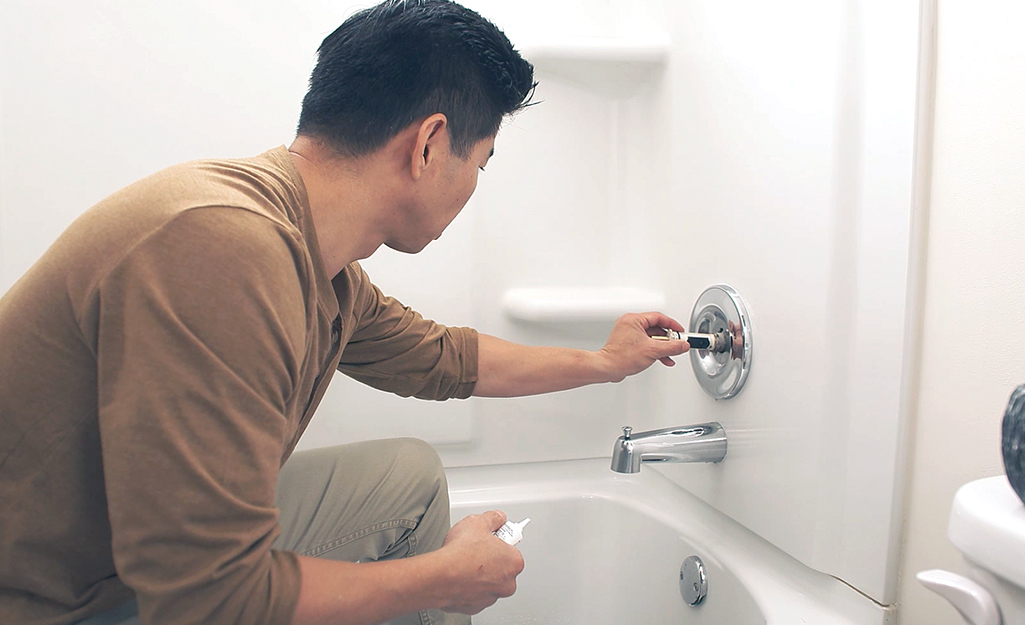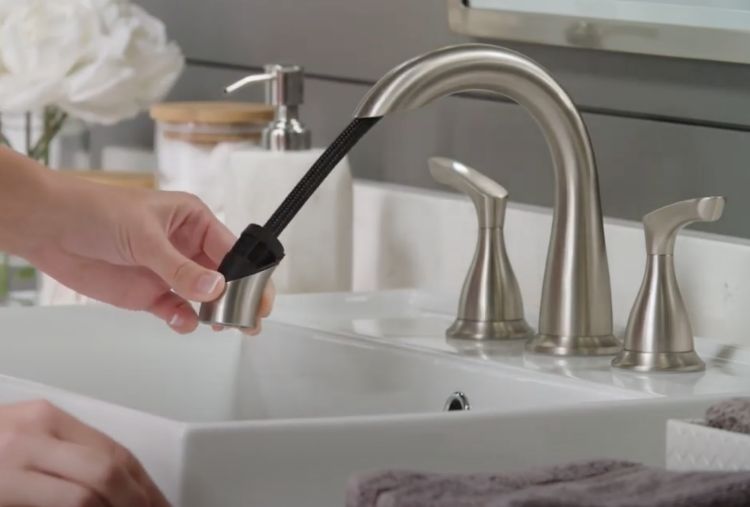Your Causes Behind Addressing a Leaking Faucet
Your Causes Behind Addressing a Leaking Faucet
Blog Article
The article author is making a few great observations related to Should I Repair or Replace a Leaky Faucet? as a whole in this post down the page.

Leaking taps might appear like a small hassle, however their influence goes beyond just the aggravation of the sound. From wasting water to incurring unneeded monetary expenses and wellness risks, overlooking a leaking tap can lead to various repercussions. In this post, we'll look into why it's critical to address this usual house problem without delay and effectively.
Wastefulness of Water
Ecological Effect
Trickling faucets contribute considerably to water wastage. According to the Environmental Protection Agency (EPA), a single faucet trickling at one drip per secondly can waste greater than 3,000 gallons of water annually. This not only stress water resources but additionally affects ecological communities and wildlife based on them.
Financial Expenses
Boosted Water Costs
Past the ecological influence, trickling taps can blow up water costs substantially. The accumulated wastage over time translates right into greater energy costs, which can have been prevented with timely repair work.
Potential Residential Property Damage
Moreover, long term leaking can result in damage to fixtures and surface areas surrounding the tap. Water build-up can cause discoloration, corrosion, and also structural concerns if left unattended, causing extra repair work prices.
Health Problems
Mold and Mold Development
The constant existence of dampness from a dripping tap develops an excellent environment for mold and mildew and mold development. These fungi not only jeopardize interior air top quality yet also pose health and wellness threats, specifically for people with respiratory conditions or allergic reactions.
Waterborne Conditions
Stationary water in leaking faucets can end up being a breeding place for microorganisms and various other virus, increasing the risk of waterborne conditions. Impurities such as Legionella microorganisms prosper in stagnant water, potentially leading to significant health problems when ingested or breathed in.
DIY vs. Professional Fixing
Pros and Cons of Do It Yourself Repair Work
While some might attempt to deal with a leaking faucet themselves, DIY repairs come with their very own collection of difficulties. Without correct understanding and devices, DIY attempts can aggravate the issue or cause insufficient repair work, extending the issue.
Advantages of Working With a Professional Plumber
Hiring an expert plumber makes sure that the underlying cause of the dripping faucet is dealt with successfully. Plumbing professionals have the knowledge and tools to detect and fix tap problems effectively, saving time and reducing the risk of further damages.
Step-by-Step Overview to Repairing a Dripping Tap
Tools Required
Prior to trying to fix a leaking faucet, collect the required devices, including a flexible wrench, screwdrivers, replacement components (such as washing machines or cartridges), and plumber's tape.
Common Faucet Issues and Their Solutions
Recognize the kind of tap and the specific problem creating the drip. Common troubles consist of worn-out washing machines, rusty valve seats, or defective O-rings. Describe producer guidelines or online tutorials for step-by-step support on fixings.
Preventive Measures
Regular Maintenance Tips
To avoid leaking taps, execute regular upkeep such as cleaning aerators, checking for leakages, and replacing worn-out parts without delay. Furthermore, take into consideration mounting water-saving devices or upgrading to extra reliable components.
Relevance of Prompt Services
Resolving leaking taps as soon as they're noticed prevents further water wastefulness and prospective damage, ultimately conserving both water and cash in the long run.
Influence On Property Worth
Understanding of Well-Maintained Residential Or Commercial Property
Keeping a property in good condition, consisting of addressing upkeep issues like leaking taps, enhances its regarded value and worth among prospective customers or renters.
Impact on Resale Worth
Residences with properly maintained plumbing fixtures, including faucets, command greater resale worths in the real estate market. Dealing with leaking taps can add to a favorable impact throughout residential or commercial property evaluations and settlements.
Environmental Obligation
Private Payment to Preservation
Taking obligation for taking care of leaking faucets aligns with more comprehensive initiatives toward water conservation and ecological sustainability. Every individual's actions collectively make a significant effect on preserving precious sources.
Lasting Living Practices
By focusing on timely repairs and adopting water-saving behaviors, people contribute to lasting living methods that benefit both existing and future generations.
Verdict
Resolving a leaking tap exceeds mere ease; it's a necessary step towards conserving water, lowering financial prices, and protecting wellness and home. Whether through DIY repairs or expert assistance, acting to deal with dripping taps is a little yet impactful method to advertise liable stewardship of resources and contribute to a much healthier, extra sustainable future.
How to Fix a Dripping or Leaky Faucet
A leaking faucet is one of the most common problems that homeowners encounter, but it being commonplace doesn’t make it any less annoying. The constant drip drip drip of a leaking bathtub faucet, showerhead, or sink tap can disturb your home’s serenity. Left neglected, a dripping faucet can also result in higher water bills and discoloration or mold growth in your sink or plumbing fixtures.
Fortunately, you don’t have to be a trained plumber to know how to stop a dripping faucet. With some basic tools, replacement parts, and a little patience, leaky faucet repair is a breeze. In this article, we’ll explain what causes dripping faucets and how you can fix them.
What Causes a Leaking Faucet?
Kitchen and bathroom faucets come in all manner of designs, but most involve some combination of valves, O-rings, seals, and washers. The O-ring is usually the weakest link, but any one of these pieces can wear down over time. Heat, moisture, temperature fluctuations, minerals, mold, and movement can contribute to warping and corrosion, breaking the watertight seal. This just comes with the territory of being a homeowner. Everything is always subject to wear and tear, and some component parts of your appliances and fixtures need to be replaced on occasion. At least replacement O-rings are cheap!
More rarely, dripping faucets can be a symptom of excessively high water pressure. Were this the case in your home, you would probably notice that the leak is not isolated to one faucet. Water pressure issues are harder to resolve on your own. We recommend contacting a professional plumber if you suspect your water pressure is too high.
How to Fix a Dripping Faucet
Pipe wrench or monkey wrench Allen wrench set Screwdrivers Old towel or rag Shut off the water.
Before you do anything, you need to turn off the water to keep from drenching your kitchen or bathroom. You should find a valve under the sink and against the wall. Once you’ve turned this valve, try turning the faucet on to confirm that the water source has been cut off.
If you can’t locate your local valve for the faucet you’re working on, you can always shut off the water to the house at the main valve. Of course, this will prohibit anyone from using the sinks, showers, or toilets while you’re working on the faucet that’s giving you trouble.
Plug or block the drain.
You’ll be disassembling the faucet and removing some small bits of hardware. Plug the drain with a stopper or rag to avoid the possibility of a small screw falling into your P-trap.
Take apart the faucet assembly.
There are several varieties of kitchen and bathroom faucets, each with its own manner of assembly. For detailed instructions on how to disassemble your faucet, you can refer to the fixture’s manual or contact the manufacturer. If you know whether you have a ball, disc, cartridge, or compression faucet, you can find detailed schematics online.
In general, you need to begin by removing the faucet handles. You might notice a small screw that you’ll need to remove with a screwdriver or Allen wrench. If you don’t see any visible securing hardware, it’s likely hidden under a decorative cap that can be unscrewed or popped off with flathead screwdriver.
Remove each piece methodically, consulting a schematic when necessary. Take notes or arrange the pieces in such a way to make it easier to correctly reassemble the faucet later.
Remove the cartridge.
Once you’ve removed the handles and securing hardware, you should be able to remove the valve cartridge or stem. Some cartridges will slide right out. Other faucet models will require you to loosen a nut with a pipe wrench before you can remove the valve stem.
Examine the exposed hardware.
With the cartridge or stem removed, inspect the component parts. Check the rubber O-rings for wear and tear. Also examine the seat washer for corrosion or other damage. These pieces are usually the responsible parties for a dripping faucet, but it’s worth inspecting the other component parts while you have the faucet disassembled.
Find replacement parts.
Once you’ve identified which faucet component has failed, find an identical replacement. Your local hardware store should have O-rings, seat washers, and other standard components in stock. If you have a luxury or uncommon faucet, you may have to contact the manufacturer for a replacement part.
It’s a good idea to take your old parts with you to the hardware store so you can compare them with the store’s inventory and be sure you’re purchasing the correct replacement.
Reassemble the faucet.
With your new parts in hand, reconstruct the faucet and handles. Don’t be tempted to overtighten screws or nuts. You might think this could create a better seal, but it can instead damage or bend a delicate part of the assembly and create a new problem for you.
Turn on the water and test the faucet.
The only thing left to do is test your work. Unplug the sink, turn the water back on, and try the faucet. Congratulate yourself on a job well done!
https://www.libertyhomeguard.com/how-to-fix-a-dripping-or-leaky-faucet/

Do you appreciate reading up on Should I Repair or Replace a Leaky Faucet?? Put a remark further down. We would be glad to listen to your suggestions about this piece. In hopes to see you back again in the future. Sharing is good. Helping others is fun. I love reading our article about Why Are My Faucets Dripping (And Can I Fix It Myself)?.
Report this page